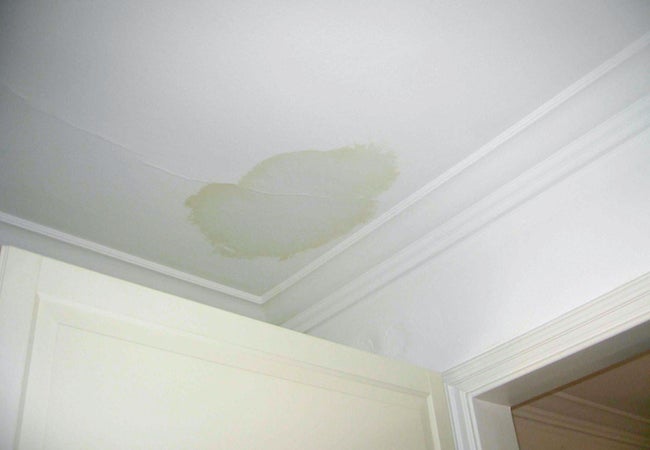Discovering a water stain on your ceiling can be a cause for concern. However, what’s perplexing is when you notice a water stain on the ceiling but no leak seems to be evident. In this article, we will explore the potential causes of such stains, the importance of addressing them, and how to tackle this puzzling issue.

Understanding the Mysterious Water Stain
Water stains on the ceiling can be a distressing sight, prompting homeowners to fear the worst – a leaky roof or plumbing issue. However, when there’s no visible sign of water infiltration from the ceiling or above, it can be challenging to identify the source of the problem.
Potential Causes of Water Stains on the Ceiling
Several factors can lead to water stains on your ceiling, even when there’s no visible leak:
- Previous Leaks: Sometimes, a water stain may be a lingering effect of a past leak that has since been repaired. Stains can persist even after the source of the issue has been addressed.
- Condensation: Moisture in the air can condense on the ceiling’s surface, leading to water stains. This often occurs in areas with poor ventilation or during extreme temperature fluctuations.
- Roofing Issues: Roof problems, such as inadequate flashing or damaged shingles, can allow water to seep in, travel through the structure, and surface as a stain in an unexpected location.
- Plumbing Condensation: If there are water pipes running through the ceiling, condensation can form on the pipes’ surface, causing water stains on the ceiling below.
- Exterior Wall Leaks: Leaks in the exterior walls, such as from windows or siding, can allow water to enter and travel within the wall, ultimately appearing as stains on the ceiling.
Importance of Addressing Water Stains
Ignoring water stains on the ceiling is not advisable, even if there is no visible leak. Here’s why addressing them is crucial:
- Structural Damage: Water stains can indicate underlying structural damage, including rotting wood, deteriorating drywall, or compromised insulation.
- Mold and Mildew Growth: Moisture from the stain can encourage the growth of mold and mildew. These microorganisms can be harmful to your health and difficult to eradicate once they take hold.
- Aesthetic Concerns: Even if there’s no active leak, water stains can be unsightly and negatively impact the appearance of your home.
Read too: Why Is My Ceiling Fan Leaking Water
Dealing with Water Stains on the Ceiling
To address water stains on the ceiling with no apparent leak, follow these steps:
- Identify the Source: Begin by ruling out any possible sources of water infiltration, such as plumbing or roof issues. Consult with professionals if needed.
- Inspect Attic or Crawlspace: Check the attic or crawlspace above the affected area. Look for signs of past or ongoing leaks.
- Ventilation Improvement: Ensure that the room is adequately ventilated to minimize condensation. Use exhaust fans in areas prone to moisture, like bathrooms and kitchens.
- Address Exterior Issues: If the stain is near an exterior wall, inspect the area for potential leaks from windows, doors, or siding. Seal any gaps or leaks.
- Repainting or Repairing: Once you’ve identified and resolved the source of the issue, you can consider repainting or repairing the stained ceiling.
Conclusion:
Water stains on the ceiling, even when no leak is visible, require attention. They can indicate underlying problems that, if left unaddressed, may lead to structural damage and health concerns. By identifying the source of the stain and taking necessary steps to resolve it, you can maintain the integrity and appearance of your home.